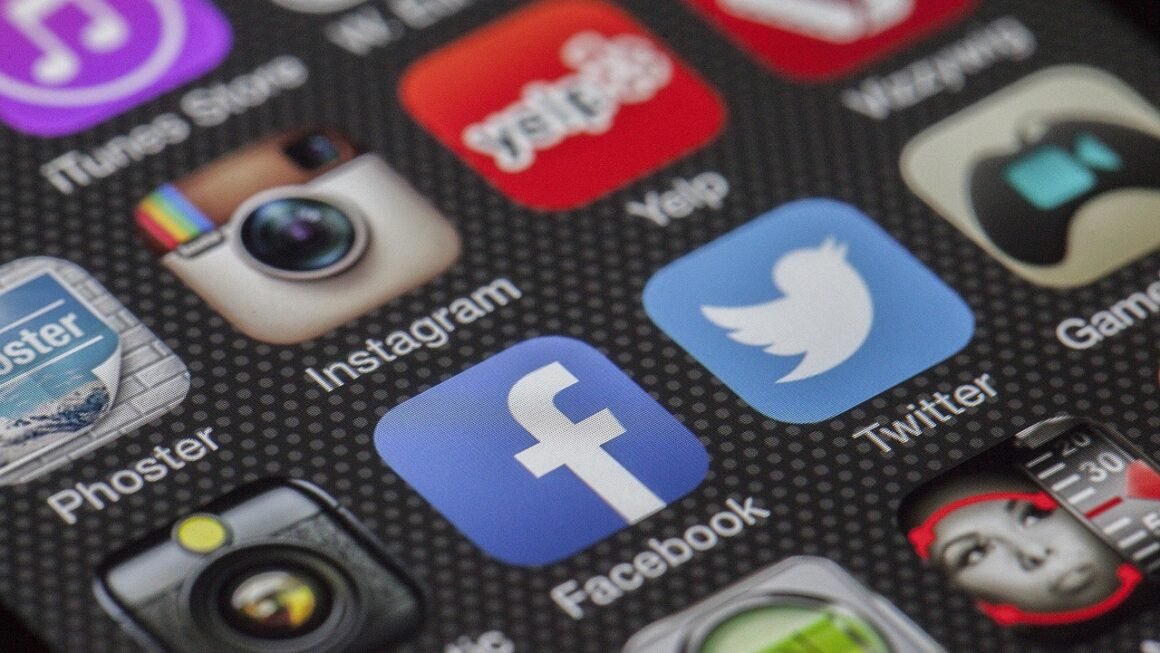The Internet of Things (IoT) is rapidly transforming our world, connecting everyday objects to the internet and enabling them to collect and exchange data. From smart homes and wearable devices to industrial sensors and connected cars, IoT is creating new opportunities for businesses and individuals alike. Understanding the potential and applications of IoT is crucial for staying ahead in today’s increasingly connected world.
Understanding the Internet of Things (IoT)
What is IoT?
The Internet of Things (IoT) refers to the network of physical objects—”things”—that are embedded with sensors, software, and other technologies for the purpose of connecting and exchanging data with other devices and systems over the internet. These devices range from ordinary household objects to sophisticated industrial tools. Imagine your refrigerator ordering groceries when it detects low supplies, or a fitness tracker monitoring your heart rate and sleep patterns.
Key Components of an IoT System
An IoT system typically consists of several key components:
- Devices: These are the “things” that collect data from their environment. Examples include sensors, actuators, and any physical object with an embedded computing device.
- Connectivity: IoT devices need to connect to the internet or a local network to transmit data. This can be achieved through various technologies such as Wi-Fi, Bluetooth, cellular networks (4G/5G), LoRaWAN, and Sigfox.
- Data Processing: The collected data is sent to a processing unit, which can be a local server or a cloud-based platform. The data is then analyzed and interpreted to extract meaningful insights.
- User Interface: A user interface allows users to interact with the IoT system, monitor data, and control devices. This can be a mobile app, a web dashboard, or another type of interface.
Benefits of IoT
IoT offers a wide range of benefits across various industries and applications:
- Improved Efficiency: By collecting and analyzing data, IoT can optimize processes and improve efficiency. For example, in manufacturing, IoT sensors can monitor equipment performance and predict maintenance needs, reducing downtime and improving productivity.
- Cost Savings: IoT can help organizations reduce costs by automating tasks, optimizing resource utilization, and preventing equipment failures. Smart energy management systems, for example, can reduce energy consumption and lower utility bills.
- Enhanced Decision-Making: IoT provides access to real-time data and insights, enabling better and more informed decision-making. In agriculture, IoT sensors can monitor soil conditions and weather patterns, helping farmers optimize irrigation and fertilization.
- New Revenue Streams: IoT can create new revenue streams by enabling new products and services. For example, connected cars can offer subscription-based services such as navigation, entertainment, and remote diagnostics.
- Improved Customer Experience: IoT can enhance the customer experience by providing personalized and convenient services. Smart home devices, for example, can automate tasks and provide personalized comfort settings.
IoT Applications in Different Industries
Smart Homes
Smart homes are one of the most popular applications of IoT. They involve connecting various household devices to the internet to enable automation and remote control. Examples include:
- Smart thermostats that learn your temperature preferences and adjust automatically.
- Smart lighting systems that can be controlled remotely and adjusted based on ambient light.
- Smart security systems that monitor your home and send alerts in case of intrusion.
- Smart appliances that can be controlled remotely and can even order supplies automatically.
- Example: Imagine arriving home on a cold winter evening to find your house already warmed to your preferred temperature, the lights dimmed to a cozy setting, and your favorite music playing, all thanks to pre-programmed settings through your smart home system.
Healthcare
IoT is transforming the healthcare industry by enabling remote patient monitoring, improved diagnostics, and personalized treatment:
- Wearable devices that track vital signs and activity levels.
- Remote monitoring systems that allow doctors to monitor patients from afar.
- Smart medical devices that can deliver medication and monitor patient compliance.
- Example: A wearable sensor continuously monitors a patient’s heart rate and blood pressure, sending alerts to their doctor if any abnormalities are detected. This allows for proactive intervention and can potentially prevent a serious health event.
Manufacturing
IoT is revolutionizing manufacturing by enabling predictive maintenance, optimized production processes, and improved supply chain management:
- Sensors that monitor equipment performance and predict maintenance needs.
- Robots and automated systems that improve efficiency and reduce labor costs.
- Supply chain tracking systems that provide real-time visibility into inventory and logistics.
- Example: A manufacturing plant uses IoT sensors to monitor the temperature and vibration of critical machinery. The data collected is analyzed to predict when maintenance is required, minimizing downtime and preventing costly breakdowns.
Agriculture
IoT is helping farmers optimize crop yields, reduce water consumption, and improve resource management:
- Sensors that monitor soil conditions, weather patterns, and crop health.
- Automated irrigation systems that deliver water only when and where it is needed.
- Drones that can be used to survey fields and identify areas that need attention.
- Example: A farmer uses IoT sensors to monitor soil moisture levels in their fields. Based on the data collected, they can adjust irrigation schedules to ensure that crops receive the optimal amount of water, reducing water waste and maximizing yields.
Transportation
IoT is transforming the transportation industry by enabling connected cars, smart traffic management, and improved logistics:
- Connected cars that offer features such as navigation, entertainment, and remote diagnostics.
- Smart traffic management systems that optimize traffic flow and reduce congestion.
- Fleet management systems that track vehicles and monitor driver behavior.
- Example: A logistics company uses IoT sensors to track the location and condition of goods in transit. This allows them to monitor temperature-sensitive items and ensure that they arrive at their destination in optimal condition.
Security and Privacy Considerations
IoT Security Challenges
Security is a major concern in the IoT ecosystem. Many IoT devices have limited processing power and memory, making it difficult to implement robust security measures. Other challenges include:
- Device Vulnerabilities: Many IoT devices have known vulnerabilities that can be exploited by hackers.
- Data Breaches: The vast amount of data collected by IoT devices can be a target for data breaches.
- Lack of Standardization: The lack of standardization in IoT security makes it difficult to implement consistent security measures across different devices and platforms.
Best Practices for IoT Security
To mitigate security risks, it’s important to follow best practices for IoT security:
- Secure Device Configuration: Change default passwords and disable unnecessary services on IoT devices.
- Software Updates: Keep IoT devices updated with the latest security patches.
- Network Segmentation: Isolate IoT devices from other networks to prevent the spread of malware.
- Data Encryption: Encrypt data both in transit and at rest to protect it from unauthorized access.
- Access Control: Implement strong access control policies to limit who can access IoT devices and data.
Privacy Considerations
Privacy is another important consideration in the IoT ecosystem. IoT devices collect a vast amount of personal data, which can be used to track people’s movements, behaviors, and habits. It’s important to be transparent about how data is collected, used, and shared, and to give users control over their data.
The Future of IoT
Emerging Trends
The Internet of Things is constantly evolving, and several emerging trends are shaping its future:
- Artificial Intelligence (AI): AI is being integrated into IoT systems to enable more intelligent and autonomous decision-making.
- Edge Computing: Edge computing involves processing data closer to the source, reducing latency and improving performance.
- 5G Connectivity: 5G networks provide faster speeds and lower latency, enabling new IoT applications.
- Blockchain: Blockchain technology is being used to secure IoT devices and data.
- Digital Twins: Digital twins are virtual representations of physical assets, allowing for simulation and optimization.
The Impact of IoT on Society
IoT has the potential to transform many aspects of society, including:
- Smart Cities: IoT can be used to improve urban living by optimizing traffic flow, reducing energy consumption, and enhancing public safety.
- Sustainable Development: IoT can help address environmental challenges by monitoring pollution, conserving resources, and promoting sustainable practices.
- Economic Growth: IoT can drive economic growth by creating new jobs, improving productivity, and enabling new business models.
Conclusion
The Internet of Things is a powerful technology with the potential to transform our world. By connecting everyday objects to the internet, IoT is enabling new opportunities for businesses and individuals alike. However, it’s important to address security and privacy concerns to ensure that IoT is used responsibly and ethically. As IoT continues to evolve, it will play an increasingly important role in shaping the future of our society. Keeping abreast of these developments and preparing for their integration into your professional and personal lives is paramount in today’s world.



